The world we’re living in changed a lot in 2020 with COVID-19 and for many of us we’ve not returned fully to the way things were. In many instances, that change has revolved around a hybrid, work-from-home model with our employers. But to do that, there’s been a lot of money spent by businesses and individuals to set up workspaces in the home.
AnkerWork has delivered a couple of really impressive devices to help with this hybrid model, the Powerconf 700 headset and B600 Video Conferencing bar. We’ll take a look at both devices today so you can make a choice whether or not you think they’re right for you.
PowerConf H700 Headset
Unlike some of the other headsets we’ve spent time with over the last 12 months, this one is clearly intended for heavy phone users. The boom mic is there and mutes with a simple flick that makes it very quick and easy to avoid other conversations being heard or unwanted sounds being transmitted during online meetings or phone calls.
There are a number of design elements of the H700 headset that make this a great option for all-day use. As a starting point, the whole unit is remarkably light, so much so it almost feels toy-like. That lightweight design lends itself to becoming a subconscious wearable. Because it’s hooked up to my work laptop and phone, as soon as I have a message or call on one of those, my headset is on and usually stays on me.
The supple padding combined with the light weight means you can not only wear the H700 for calls and meetings but leave it on and enjoy some streaming media. The headset is seemingly close to infinitely adjustable, with multiple hinge points, plenty of padding and a lot of adjustment in the headband. This all combines, making the PowerConf H700 Headset exceptionally comfortable, particularly for an on-ear device.
Finally, from a physical standpoint, the earlier mentioned boom mic is on an arm that’s reasonably significant in length. While others work fine, this one, when down, is positioned really well for the user’s voice to be transmitted really clearly to their caller or meeting.
The controls are really simple to use, whether it’s media playback or call handling; it’s one-touch stuff. That makes it a user-friendly setup which is nice but also convenient for quick response.
On the left ear, you have a twist dial for volume, and in the centre of that, a button that controls playback and calls. Under the ear cup, you’ll find the control (ANC, normal and hear-through), which is well located to ensure that it’s not accidentally activated during calls or media playback.
On the right, you’ll find the power button on the rear of the ear cup, on the bottom is the charging port and on the top a mic mute button. The latter is somewhat redundant, purely because the mic boom mutes your mic when you flip it up to an angle higher than horizontal. This is easy to know you’ve done because there’s a distinct notch in the hinge that you feel, as well as the audible notification that your mic has been muted.
Sound and Noise cancelling
There are a couple of factors to consider when discussing sound quality here.
The first is the call quality that is delivered and, in short, it’s brilliant. For whoever you’re talking to, thanks to the mic arm bringing the microphone down near your mouth, combined with the voice shield AI means you’re easily heard. The voice shield means that even ambient noise of a reasonable volume, in close proximity to you is cancelled out, which also improves the feeling of privacy on your call, which is important for office environments.
Turning that around, even in a relatively noisy open office environment, the ANC reduced noises around me to little more than murmurs. This was a huge benefit to me in reducing distraction and increasing focus on what I was doing at the time.
Regarding media playback, I have mixed feelings about this headset. Not because it does a bad job of anything but because it’s not intended to be a primary playback device. Regardless of what the intent of the device is, it does a pretty solid job of delivering very enjoyable listening.
Straight out of the box, you get a nicely balanced audio mix. You’ll get a bit of bass, clean and clear mids and treble which is all you can ask of a headset like this one. But if you want to, through Anker’s software, you can tweak and balance the audio to your preference, making it even better; taking it from nicely balanced to customised to your listening preferences.
Battery and Charging
In my paid working life, I’m typically on calls for at least 3 hours a day; normally longer when you combine mobile and MS Teams calls. I found that if I turn the headset off when not in use vs listening to music, I could get very close to a full workweek of use – Even with heavy use.
All of my personal use equipment has USB-C charging and this is no exception so if I needed a quick top up for the battery, no problem. Adding in the charging stand meant that I was able to charge the headset quickly and easily throughout the day to ensure continued use whenever I needed the headset.
Would I buy one?
For my work use, without hesitation, I’d grab one of these in a second. The feature set, battery life and broad audio capabilities make the $299.95 price tag a worthy investment if you’re on a lot of calls. That being said, if you’re more a commuter than an office-based worker and want a headset to suit, the boom mic will make this look and feel a bit odd so investigating other options is probably on the cards for you.
Ankerwork B600 Video Conferencing Bar
If the PowerConf H700 doesn’t hit all the marks you need and you’re in a quiet space then the B600 Video Bar may be the upgrade you need. It’s a 2K video conferencing bar with a number of key differences from other webcams that make it well worth the money.
As a starting point, it’s really important to highlight that this isn’t just a web camera. It has a lot of features that elevate it beyond that label to “online video conferencing tool”. In terms of features, the B600 matches it with the best on the market.
Possibly the biggest (apart from the price) potential deterrent for potential buyers is the physical size of this camera. It really is a big piece of kit for a webcam whether the light bar is open or closed, which also provides privacy screening. That lighting though, gives great support to the 2K camera, ensuring that even with a strong light source behind you; you don’t look like you’re in witness protection whistleblowing on 60 minutes.
The problem that anyone faces looking at this though is that $499.95 is a tough sell for a webcam.
The design of the B600 does give a couple of advantages in workspace efficiency, though. Starting with the light that we’ve already mentioned. It can be manually triggered to work as a desk light, or as lighting for your video calls. Depending on your workspace, this could save you some space and power.
If you’re happy with the basics, you can simply plug in via the USB-C port to power and provide data to your camera. However, there is software that you can install offering further features; more on this later. Or you can use the provided power brick and a USB cable to connect to your machine or change between machines easily.
It has decent — I’ll avoid saying “good” — speakers that will be more than enough to complete video calls and some low-volume music playback. They’re not going to compete with studio monitor speakers or a really nice headset for audio quality, but that’s fine by me because I have good speakers and a headset already.
This isn’t the only design facet I particularly liked. On the sides of the camera are capacitive buttons that (left) trigger the microphone mute/unmute function in calls and (right) the light. The intensity of the light can be controlled by a capacitive slider on the front of the camera, to the right of the lens, from the user’s view, or can be done automatically by the software.
The in-call experience
The earlier mentioned software provides options to change your captured and broadcast resolution from 360p to 720P, 1080P and 2K. A big bonus if your upstream speeds aren’t as good as they perhaps could be.
As part of the setup, you can also choose what viewing angle (65, 78 or 95 degrees) the camera will use; this makes the B600 an extremely versatile option for mobility and meetings. Allowing users to have a wide angle in a meeting room or a more focused angle when it comes to a private workspace.
What really hammered home for me just how good the camera quality of the B600 is, is the comments I got when I started using it. Co-workers were noting how crisp and clear my video stream was and how confronting it was to see me in high resolution.
The other is that, generally, not just for a webcam, the audio quality being transmitted is exceptionally clear. This is thanks to the multiple microphones built into the camera, which isolate the person talking and eliminate background noise.
Because of the work I do during the day (privacy requirements) I’m not able to provide video call samples, but suffice to say; the Ankerwork B600 is a mighty bit of kit that — budget allowing — I’d happily recommend.
At the time of publishing this review, the B600 is on special for $349.95 through the Australian site with the PowerConf H700 down to $199.95
Both devices offer excellent quality audio for the user and to their callers, with some great freedom also associated with the wireless (headset) connectivity and software features.
Disclosure Statement
Due to hygiene with the headset and costs of shipping, the product has not been requested for return

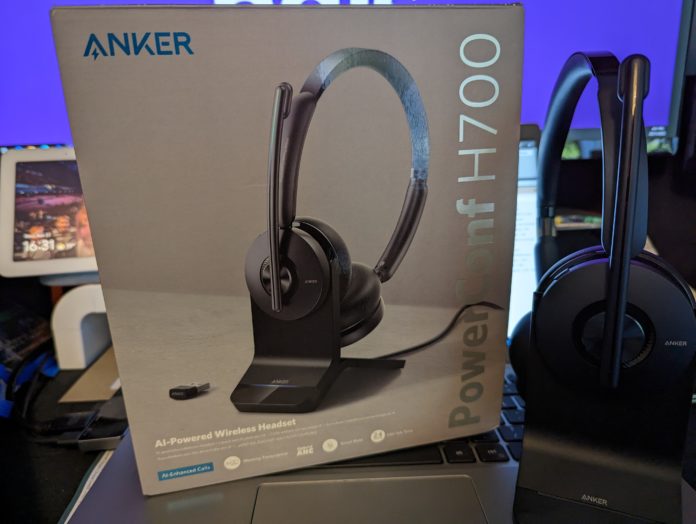



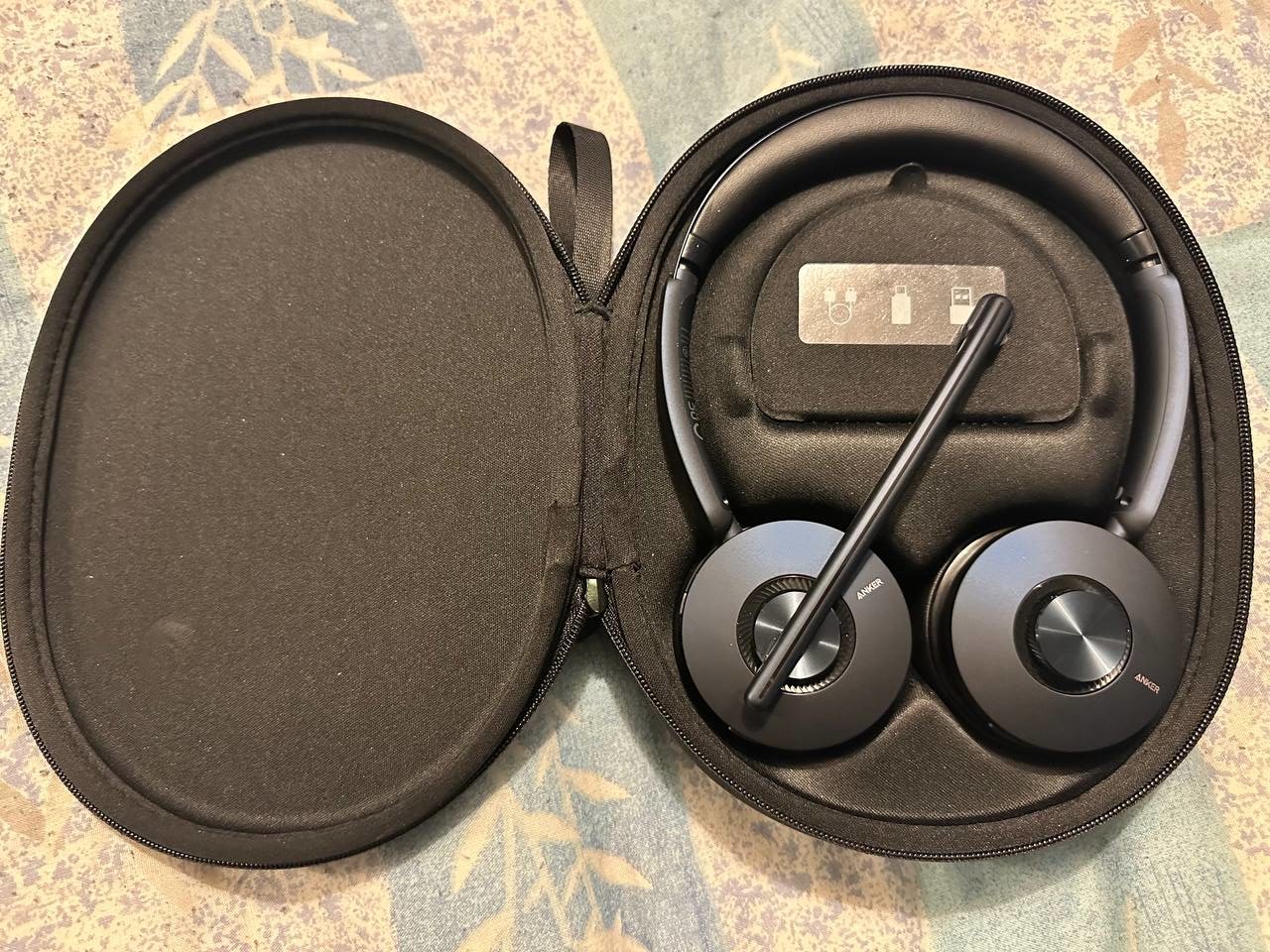
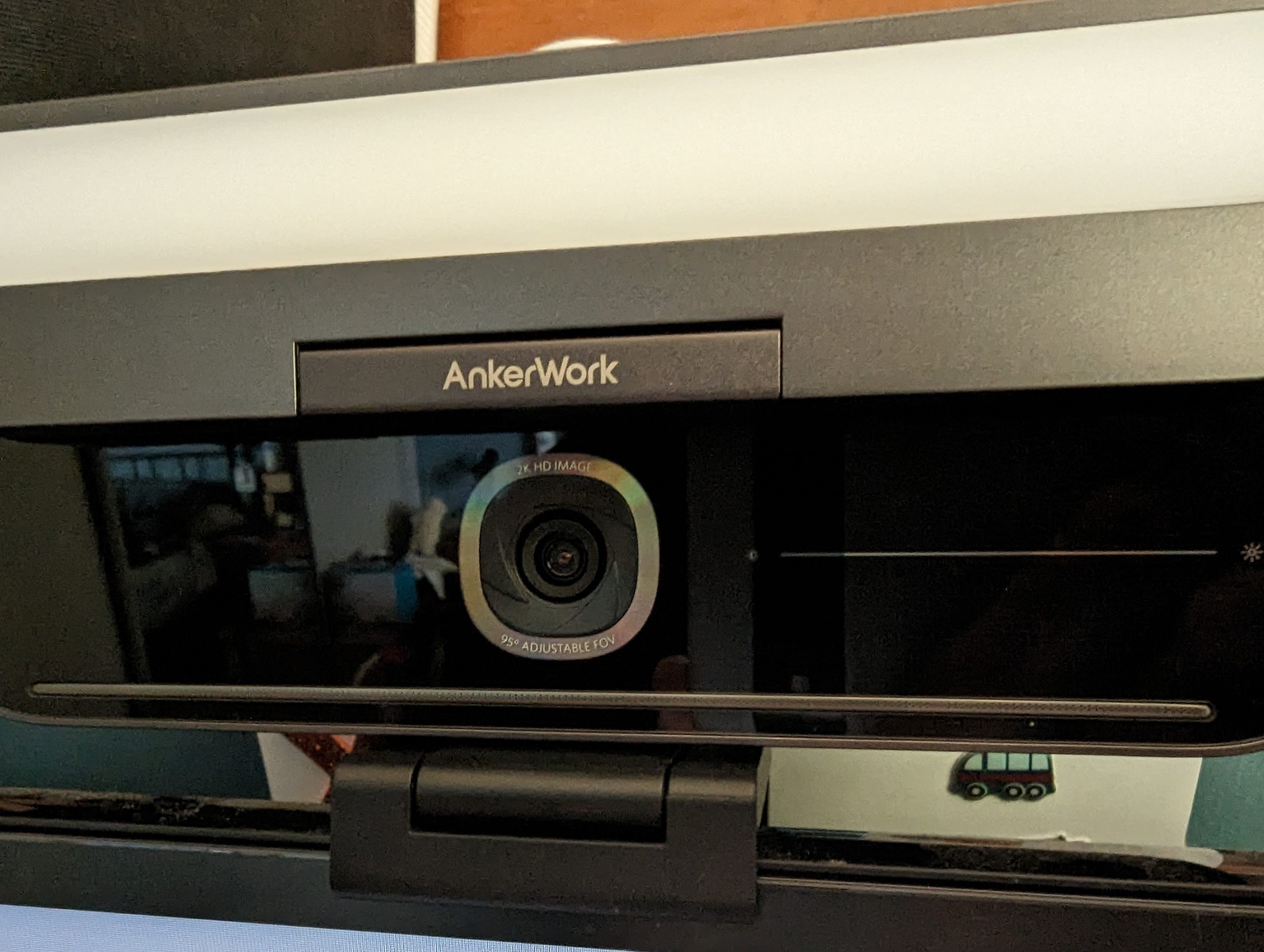

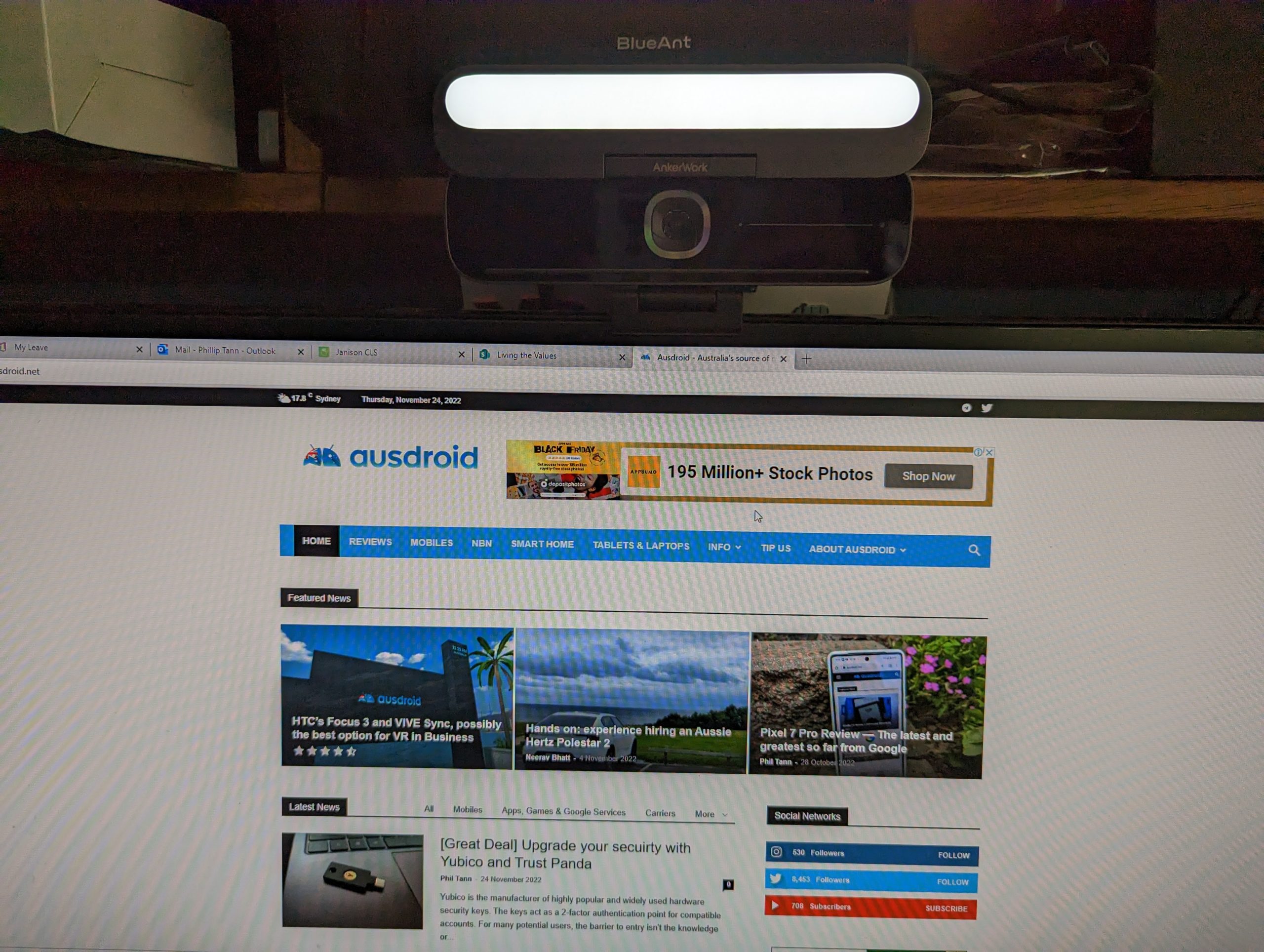
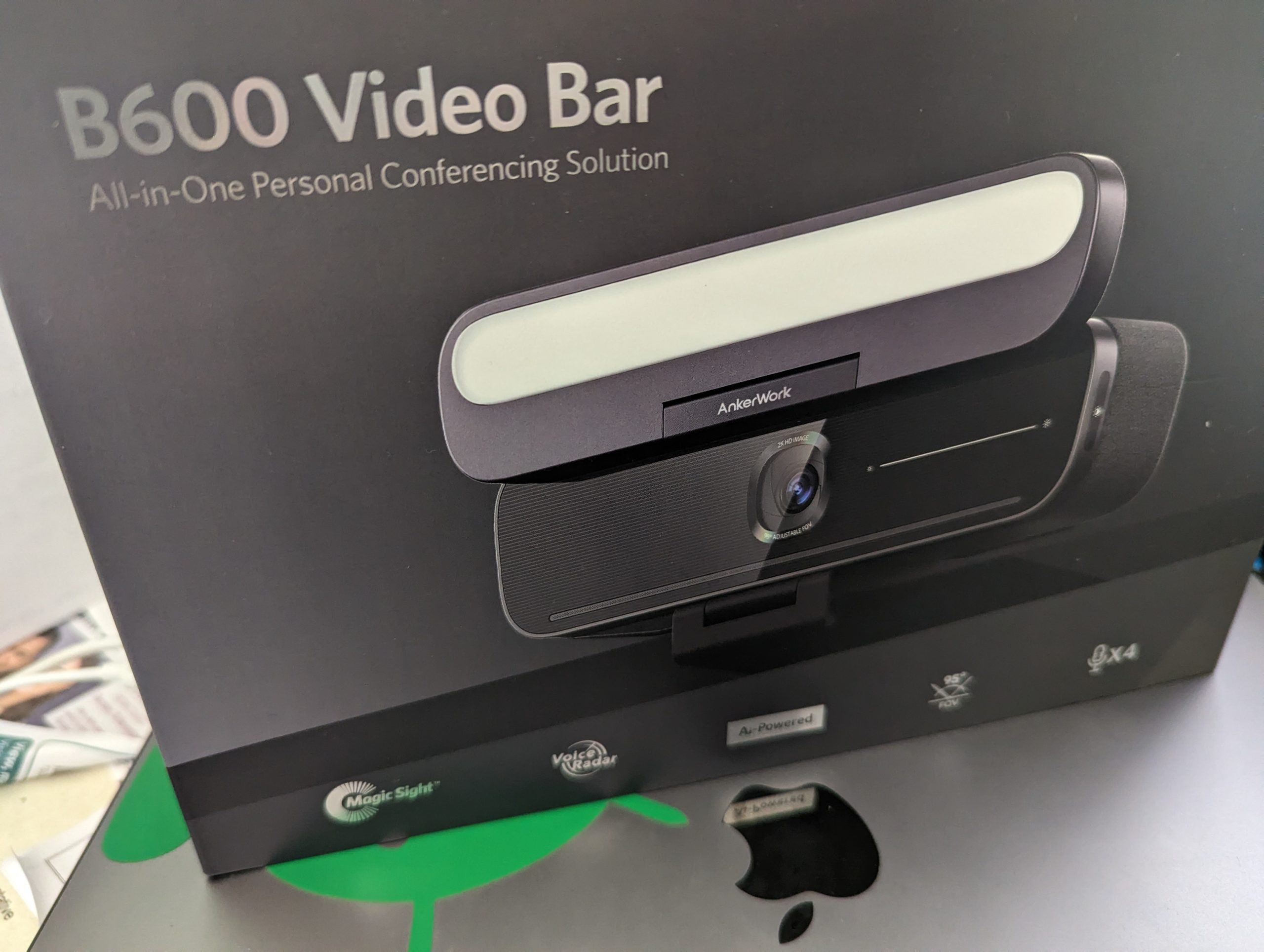



Webcam with integrated LED lightbar. Finally, someone has seen the light.
Seriously.
How often is it that you’ve been in a Teams or Zoom video conference, where most, if not all, the participants were poorly lit. Having decent lighting for video conferences, is almost as important as the quality of the camera and mic.
Phil, can the webcam be used for Windows login?
The Windows Hello login?